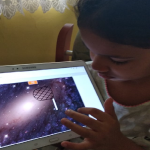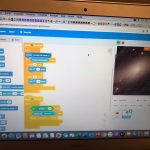Climate Detectives Projects 2020-2021
Project title: Monitoring Asteroids
Team: SATBOOT
CENOM Rio de Janeiro Portugal 10 10Student’s age: 8-9 years old, 10-11 years old, 12-13 years old, 14-15 years old
Many asteroids and meteorites fell in Brazilian territories in the year 2020. How to detect them?

In Brazil, in the year 2020, many meteorites were found and some houses were even hit on the roofs. Asteroid hunting campaigns and reports are very important to keep us informed.
The free use of ESA’s satellite data will be an innovation that will help arouse students’ curiosity.
https://scratch.mit.edu/projects/407574429/
https://asteroidday.org/event/hunting-asteroids-playfully-2/

Each team member will be able to carry out the investigation, photographing and recording their findings. We need to create a monitoring network and there is no age for this, just have a project that can guide them.
Sentinels satellites were created by ESA for the European Union’s Copernicus program. Each of them has very technologically advanced instruments that generate images and data. The information is fast, students can have access to it and we will be able to follow all the information about the binary system of asteroids Didymos and Bennu.
Hunting asteroids, following the news, where to get this information? The search for this information will be necessary for us to understand that these celestial bodies, large or small, can cause disorders. For this purpose, in Brazil we have BRAMON, a monitoring station that does this type of work.
We will be able to observe and compare how each region is most affected. We will use some sheets of the kit “Understanding the Earth through Space I”: Sheet 6 – Rocks or meteorites? (page 101); the Infographics on the characteristics of Comets, Asteroids, Meteoroids, Meteors, Shooting Stars and Meteorites (p. 105); Photograph of Barringer’s Crater (USA) (p. 107); Photograph of the Willamette Meteorite (USA) (p. 108); Photographs of the Meteorite Hoba (Namibia) (p. 109) and Sheet 4 – Making meteorite craters (p. 111).

Will we know how to differentiate if we find one in our backyard? Research indicates that, after the meteoric fall, the climate has changed in some regions. Is it true? The starting point for these discoveries is to relate the facts, investigate and assemble a photographic report on what was observed.
https://padlet.com/rbordalo/rt64qug9cppbbuye
https://asteroidday.org/event/hunting-asteroids-playfully-2/
https://scratch.mit.edu/projects/407574429/
Projects are created by the teams and they take the full responsibility of the shared data.
← All projects





